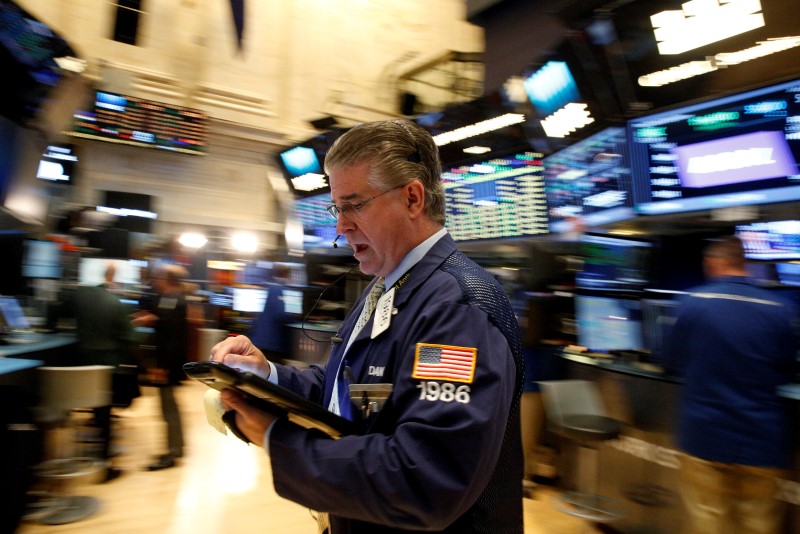By Rodrigo Campos and Noel Randewich
NEW YORK (Reuters) - Wall Street's rally, fed primarily by defensive stocks embraced by worried investors, may be spreading to some of the growth companies that more typically lead a market forward.
The move remains incipient - typical leaders like consumer discretionary companies, technology and financials continue to lag the utilities and staples that propelled the S&P 500 (SPX) to record highs this week.
But investors have started to turn to shares of smaller companies and those in some traditional growth areas, such as consumer durables, as worry about global economic weakness and U.S. corporate earnings has subsided a bit - and as some of those typically high-priced shares seem more affordable than the defensive names.
If it materializes, the shift to growth would signal more confidence in the economy and more likelihood that the market could hold its highs and go higher.
"Our favored sectors looking into the second-half of 2016 are information technology, healthcare and consumer discretionary, three of the worst performing sectors year-to-date," said Terry Sandven, chief equity strategist at U.S. Bank Wealth Management.
Furthermore, the last 10 sessions have seen the small cap Russell 2000 index (RUT) gain 11 percent while the S&P has risen 8 percent, as investors have also bought into the more volatile small-company space.
“Defensives have run their course. Professionals are warning investors from buying those stocks for the yield. That leaves cyclicals as the way to go for the market to keep rising," said Kim Forrest, senior equity research analyst at Fort Pitt Capital Group in Pittsburgh, who said she has been buying technology shares and also looking at industrials.
GROWTH AT A BETTER PRICE
The very fact that technology and financials have been weak suggests to some investors that U.S. stocks could keep rising this year. They are more affordable than those of the market-leading sectors and they have room to move higher, especially if upcoming earnings reports meet or exceed expectations.
Information technology, telecom services, materials, consumer discretionary and healthcare stocks now are selling at or below 17 times their expected earnings over the next 12 month, according to Thomson Reuters data.
By comparison, stocks in the S&P consumer staples sector (SPLRCS) are trading at roughly 20 times their expected earnings over the next 12 months, relatively pricey for a slow-grow category.
The energy sector of the S&P 500 (SPNY), typically expected to do well when the economy expands, has outperformed over the last three months. With a 14-percent return, it is the only non-defensive sector with double-digit percentage gains so far in 2016.
THE WALL OF WORRY
Though it is a Wall Street axiom that stocks "climb a wall of worry," it is somewhat unusual to see defensive stocks like utilities and consumer staples propel markets to record highs.
That happened this year because investors - worried about the fallout from Britain's vote to leave the European Union, as well as several quarters of weak U.S. economic growth and corporate earnings - flocked to dividend-paying protective sectors.
But most recently, with U.S. employment showing signs of improvement and analysts projecting that corporate earnings may have bottomed, the shift to sectors that have missed out on the past year's market gains already appears to be under way.
Investors started July by adding money to exchange-traded funds that track healthcare, materials and consumer staples and consumer discretionary stocks all saw net inflows, according to ETF.com.
Energy, still 30 percent below its 2014 record high, may be poised for even more gains as oil prices stabilize after the sharpest decline in a generation. ExxonMobil (N:XOM) has added more to its market capitalization in 2016 than any other U.S. company.
Consumer discretionary companies - projected to show 8.7 percent year-over-year growth in their second quarter earnings - will be the "shining star" of the S&P sectors, with autos, retail and service companies showing strength, RBC Capital Markets Chief Equity Strategist Jonathan Golub, said in a Tuesday note to investors.

Any improvement in earnings and the economy could spur more investors to jump in and bet on growth, said Paul Zemsky, chief investment officer, multi-asset strategies and solutions at Voya Investment Management in New York. "After breaking a record you should expect folks will get in for the ride."